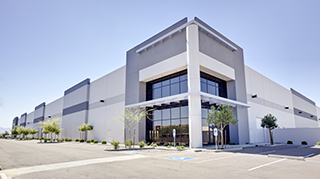
Estate Planning for Newlyweds:
The Essentials
As life settles down after the big day, reality settles in for day-to-day practical issues. Included in these should be preparing an appropriate estate plan, which is a responsible step in the unfortunate event that one spouse becomes incapacitated or passes away. Here are essentials to consider:
Meet with a skilled estate planning attorney – Discuss your goals, such as providing for loved ones, mitigating or avoiding probate, minimizing taxes, providing for the orderly asset distribution and stewardship, protecting assets, and planning for incapacity.
Compile documentation – This process will help not just in estate planning but also in other processes you’ll encounter. Centralize (digitally and in print) your marriage certificate, birth certificates, citizenship documentation, social security cards, passports, armed forces IDs, prenuptial and postnuptial documents, and documents for your children.
Gather asset information – Your attorney should provide an asset questionnaire, including: trust deeds of home(s) and rental properties, vehicle titles, and other valuable personal property, banking, retirement, life insurance, and other financial accounts. Be sure to discuss “Community vs. Separate Property” and “Common Law States” with your attorney, as it applies to your situation.
Review beneficiaries – As you set up new bank accounts, it is important to consider how you list beneficiaries; there are myriad ways to title your assets once you’re married, such as joint-tenancy and Tenants-in-common. Review all accounts to reflect your spouse as the new beneficiary or transfer on death designation (checking/savings, investments, retirement/pensions, property titles, etc.).
Retirement plan – The distribution of your retirement plan and IRA accounts should be thoroughly considered. If you designate your spouse as the beneficiary, he or she has the advantage of being able to roll over your IRA and take minimum distributions, which is an excellent means of support for your spouse during retirement years. However, in this case, your spouse may designate new beneficiaries after your death, and any balance in the retirement funds may not go to your children. If you designate your children as beneficiaries, you deprive your spouse of any use of the funds in your plan during his or her lifetime, but ensure that your children will inherit your retirement funds.
Create wills and trust – A will is a legal document detailing what an individual wants to happen after they die. This includes their final wishes regarding their remains as well as how they want their money, assets, and property to be distributed (e.g., your spouse named as the primary beneficiary). It should be noted that if your estate plan consists of a will alone, you are spouse will likely have to go to court if you become incapacitated or upon your death. Instead, a living or revocable trust does not require going through probate; if your assets are properly titled, they would pass directly to your spouse upon incapacity or death, without the need for any court intervention.
Powers of attorney – A power of attorney (POA) is a document that allows you to appoint someone to manage your money, property, and medical decisions if you become unable to do so yourself. There are several types of POAs for different situations, so always speak to a lawyer to determine the best option for your situation.
Advance medical directive – This allows a person to dictate how they wish to be cared for in a life-or-death situation. It lets your physician, family, and friends know your health care preferences, including the types of special treatment you want or don’t want at the end of life; diagnostic testing; approval or disapproval or certain surgical procedures; the location of your primary care facility; medications to avoid; whether or not to attempt cardiopulmonary resuscitation; and organ donation.
Pre- and post-marital agreements – These agreements help protect each party and streamline the process for their families, in the event of a divorce or after they have passed. Also, such agreements will help ensure that your assets are taken care of in case something unforeseen happens to you.
Second marriage – Merging two families and finances inevitably brings additional challenges. Think through every scenario, addressing issues such as death of either spouse, stepchildren, future children, in-laws, aging grandparents, etc. See “Estate Planning for Blended Families” for details.
Life Insurance – Adequate life insurance can help prevent a surviving spouse’s already difficult situation from becoming worse. Your estate planning attorney should be consulted in the process, such as identifying opportunities to change insurance policies to minimize taxation.
Specialized Estate Planning for Newlyweds
Taking the time and effort to create an estate plan is one of the most thoughtful steps you can take for your family and loved ones. The attorneys at Mortensen & Reinheimer, PC thoroughly understand the estate planning needs of newlyweds. Please contact Mortensen & Reinheimer, PC at (714) 384-6053 to make an appointment, or use our online contact form. Our website is http://www.ocestateplanning.net.

About the author:
Tamsen R. Reinheimer, Attorney, is a Certified Specialist in Estate Planning, Trust & Probate Law (The State Bar of California Board of Legal Specialization). She has significant experience in all aspects of estate planning, trust administration, and probate. Contact Tamsen at tamsen@ocestateplanning.net.






